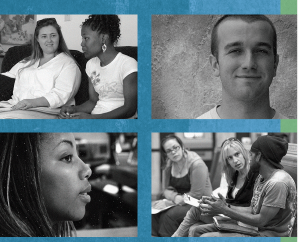 Connecticut, like many other states, is not a place where homeless/unstably-housed youth and young adults are highly visible. As a result, advocacy for additional supports and services for these youth and young adults was historically plagued by several questions:
Connecticut, like many other states, is not a place where homeless/unstably-housed youth and young adults are highly visible. As a result, advocacy for additional supports and services for these youth and young adults was historically plagued by several questions:
- How many youth and young adults in Connecticut experience homelessness, and how can we find out since so many try to stay under the radar and avoid system involvement?
- Who are these youth and how do we house them?
- Why can’t the child welfare system serve them to ensure they're not living in places that make them more vulnerable?
We soon realized that Connecticut required a more comprehensive approach to systemically address the needs of, and barriers faced by, these youth and young adults.
The Homeless Youth Workgroup of Connecticut’s Reaching Home Campaign, an effort to prevent and end homelessness that was modeled after the federal Opening Doors plan, spent most of 2014 in a planning process to create a roadmap addressing housing, data, and supports/services for youth and young adults. Through the work of three subgroups, and with the generous support of the Melville Charitable Trust, a consultant was hired to oversee and manage the planning process. The result - Opening Doors for Youth: An action plan to provide all Connecticut youth and young adults with safe, stable homes and opportunities – a blueprint to help us move from single issue advocacy to a multi-layered systemic approach.
The Action Plan includes five main strategies plus two over-arching tactics to oversee the work. These include strategies to:
- Create better tools to identify, screen, and refer youth in need
- Expand direct services along the housing continuum
- Address the training and technical assistance needs of providers
- Improve data collection; and advocate for changes in policy
The Workgroup successfully advocated for a Statewide Housing Services Coordinator for Youth to oversee and manage much of the work tied to the strategies. Coordination through a Funding and Transparency Mechanism is in the planning stages to ensure less fragmentation of current services to youth and young adults who are homeless and unstably housed in Connecticut.
Additionally, some aspects of the Action Plan have already been addressed:
- The first-ever statewide homeless youth count occurred in January
- In 2014 the legislature reinstated funding to begin to address the crisis response needs of youth on their own
- CSH assisted in the development of a model for a pilot program to address the housing needs of youth who require supportive housing.
For more information about Connecticut's Action Plan on homelessness among youth and young adults, please contact Stacey Violante Cote at sviolante@kidscounsel.org.
Special thanks to Stacey Violante Cote of the Center for Children's Advocacy in Connecticut for authoring and contributing to this piece.


